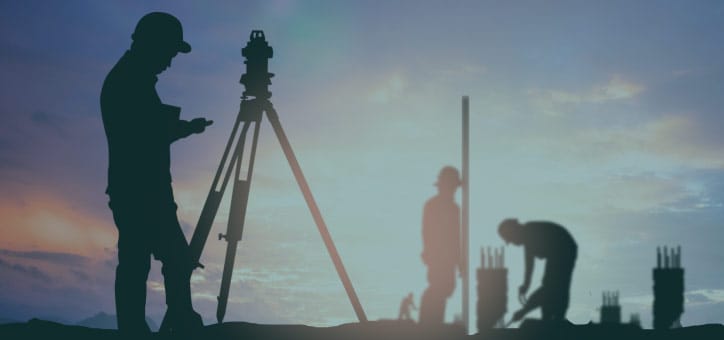Introduction
In the realm of civil engineering, the demand for efficiency and accuracy has led to the rapid adoption of automated surveying techniques. At Afcones Infratech Pvt. Ltd, we embrace these innovations to streamline our surveying processes. This blog delves into the various automated surveying techniques, their benefits, and their impact on civil surveys.
What are Automated Surveying Techniques?
Automated surveying techniques utilize advanced technologies to collect and process data with minimal human intervention. These methods enhance accuracy, reduce field time, and improve overall project efficiency.
Key Automated Surveying Techniques
1. Robotic Total Stations
Robotic total stations revolutionize traditional surveying. These instruments combine the functionalities of total stations with automation features. Operators can control the station remotely, allowing for efficient data collection even in challenging environments.
- Benefits:
- Increased productivity due to remote operation.
- High accuracy in measurements.
- Ability to perform surveys with fewer personnel.
2. GPS and GNSS
Global Positioning System (GPS) and Global Navigation Satellite System (GNSS) technologies provide accurate positioning data. By using multiple satellites, these systems offer real-time location information, making them essential for large-scale surveys.
- Benefits:
- High accuracy over long distances.
- Rapid data collection in various terrains.
- Versatility in applications, from mapping to construction.
3. 3D Laser Scanning
3D laser scanning captures detailed three-dimensional data of structures and landscapes. This technique generates point clouds that create accurate models for analysis and design.
- Benefits:
- Exceptional detail and accuracy in measurements.
- Rapid data collection over large areas.
- Ability to visualize complex structures.
4. UAV and Drone Technology
Unmanned Aerial Vehicles (UAVs), commonly known as drones, have become increasingly popular in surveying. Drones equipped with cameras and sensors can capture high-resolution images and data from above.
- Benefits:
- Quick access to hard-to-reach areas.
- Cost-effective compared to traditional aerial surveys.
- Real-time data processing and analysis.
5. Mobile Mapping Systems
Mobile mapping systems integrate multiple sensors into a vehicle, allowing for efficient data collection while driving. This technique is particularly useful for surveying roads and urban environments.
- Benefits:
- Fast data collection over extensive areas.
- Accurate mapping of existing infrastructure.
- Flexibility to adapt to various project needs.
Benefits of Automated Surveying Techniques
- Enhanced Efficiency Automated techniques significantly reduce the time required for data collection. By minimizing manual tasks, projects can progress faster, leading to timely completion.
- Improved Accuracy Advanced technologies eliminate human errors, ensuring that the collected data is precise. This accuracy is crucial for design and construction phases.
- Cost Savings While the initial investment in automated equipment may be high, the long-term savings in labor and time often outweigh the costs.
- Safety Automating hazardous tasks reduces the risk to surveyors. Using drones or robotic stations allows professionals to avoid dangerous environments.
- Data Quality Automated methods produce high-quality data that can be easily processed and analyzed. This quality leads to better decision-making and project outcomes.

Practical Applications in Civil Surveys
1. Infrastructure Development
Automated surveying techniques support the planning and construction of roads, bridges, and buildings. Accurate data ensures that designs meet specifications and safety standards.
2. Environmental Monitoring
These techniques help assess environmental conditions and changes over time. By collecting data efficiently, we can monitor ecosystems and respond to environmental challenges.
3. Urban Planning
Automated surveys facilitate the analysis of urban landscapes, enabling planners to design sustainable and efficient cities. Accurate mapping supports informed decision-making.
4. Disaster Response
In disaster scenarios, automated surveying provides rapid assessments of damage. Drones and other technologies allow responders to gather critical information quickly.

Challenges of Automated Surveying Techniques
While the advantages are numerous, automated surveying techniques also come with challenges:
- High Initial Costs Investing in advanced technology requires significant capital. Organizations must evaluate the return on investment.
- Technical Skills Required Operating automated equipment demands specialized skills and training. Ensuring that staff are well-trained is essential for success.
- Data Management The volume of data generated can be overwhelming. Implementing effective data management systems is crucial for storing and analyzing information.
Future Trends in Automated Surveying
As technology continues to evolve, we can expect further advancements in automated surveying techniques:
- Integration with Artificial Intelligence AI will enhance data processing and analysis, leading to smarter decision-making and predictive analytics.
- Enhanced Sensor Technology Improvements in sensor technology will provide even higher accuracy and more detailed data collection capabilities.
- Increased Use of Drones Drones will become more prevalent in various surveying applications, offering unique solutions for complex projects.
Conclusion
At Afcones Infratech Pvt. Ltd, we recognize the transformative power of automated surveying techniques in civil engineering. By adopting these innovations, we enhance project efficiency, accuracy, and safety. As we continue to explore the latest technologies, we remain committed to delivering exceptional surveying solutions tailored to our clients’ needs.
